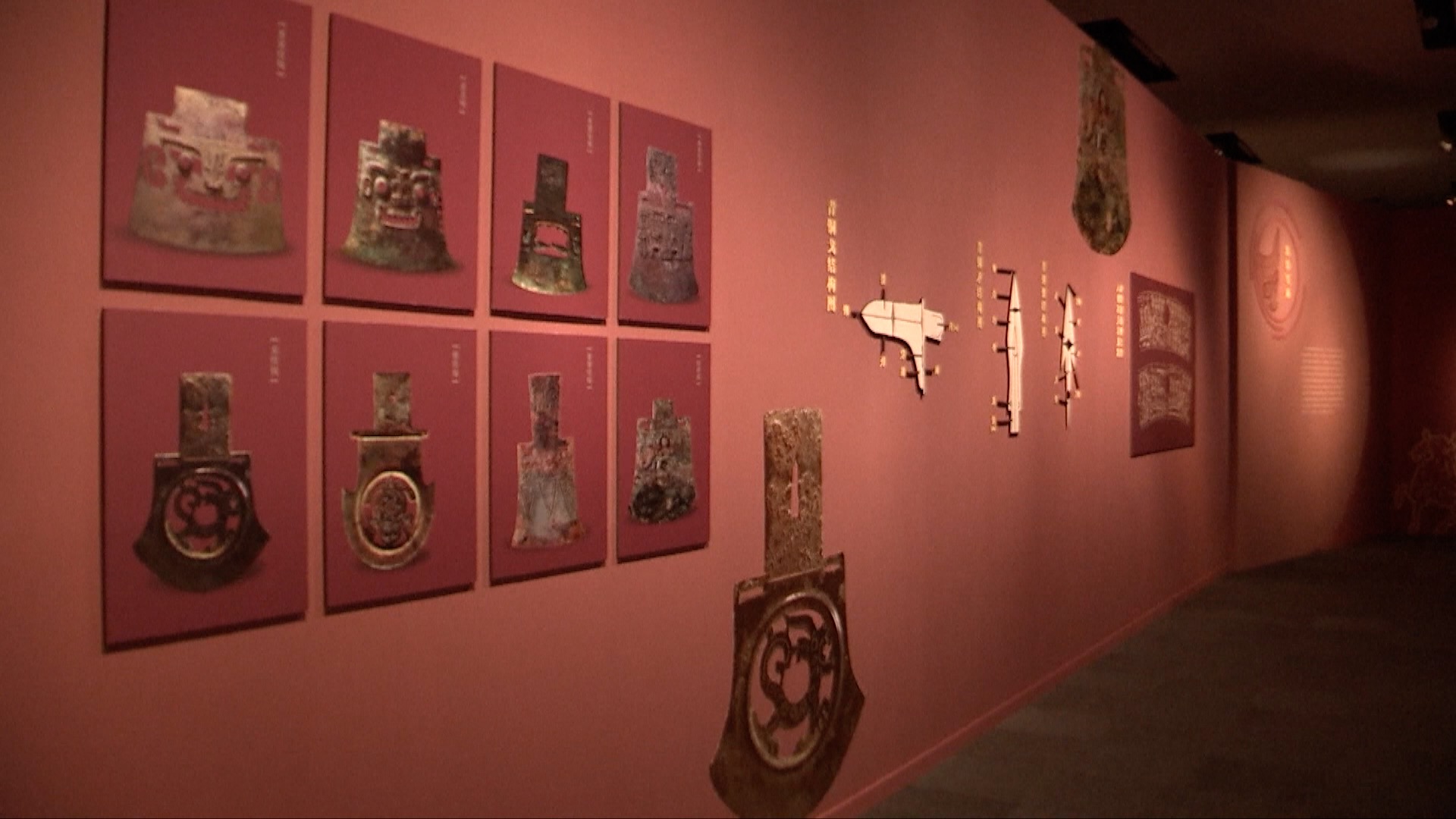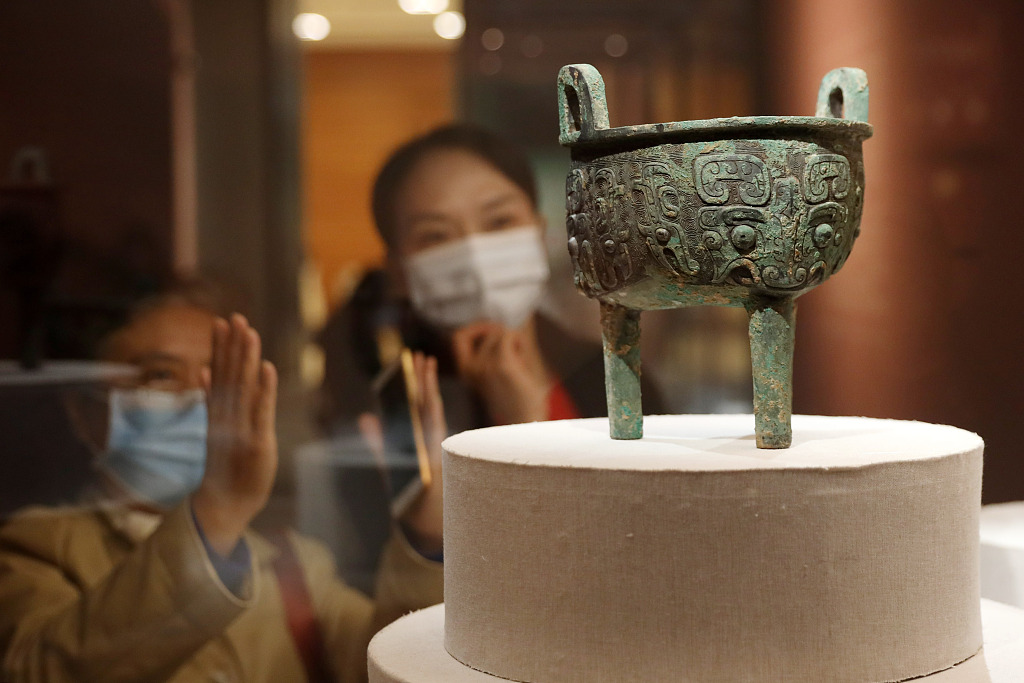01:03

The National Museum of China in Beijing is exhibiting a wide array of archaeological finds dating back to the late Shang Dynasty (1600-1046 BC). Named "Glory of Hedong," the exhibition features over 170 artifacts unearthed from the Jiuwutou site in north China's Shanxi Province.
Hedong, literally meaning "east of the river," refers to the southwestern part of Shanxi Province where the middle reaches of the Yellow River turn from the north to the east. It was known as the cradle of Chinese civilization in ancient times, and also where the Jiuwutou site is located.
The archaeological site is a cemetery for the nobility from the late Shang Dynasty. Archaeological excavations began in August 2017 when hundreds of bronze wares, potteries, bone objects and other valuable cultural relics were unearthed from the region.

An artifact unearthed from the Jiuwutou site in north China's Shanxi Province is on display at the National Museum of China in Beijing, October 27, 2020. /CFP
An artifact unearthed from the Jiuwutou site in north China's Shanxi Province is on display at the National Museum of China in Beijing, October 27, 2020. /CFP
The excavation of the Jiuwutou site was a major breakthrough in the archaeological study of the Shang Dynasty. Later, the site was listed as one of "China's Top 10 Archaeological Discoveries of 2018."
Apart from the artifacts, the exhibition also displays the complex scientific process of the archaeological excavation at the Jiuwutou site via 3D displays, photos and videos.
Co-hosted by the National Museum of China and Shanxi Culture Relics Bureau, the exhibition lasts for two months until the end of December.
(With input from Xinhua)